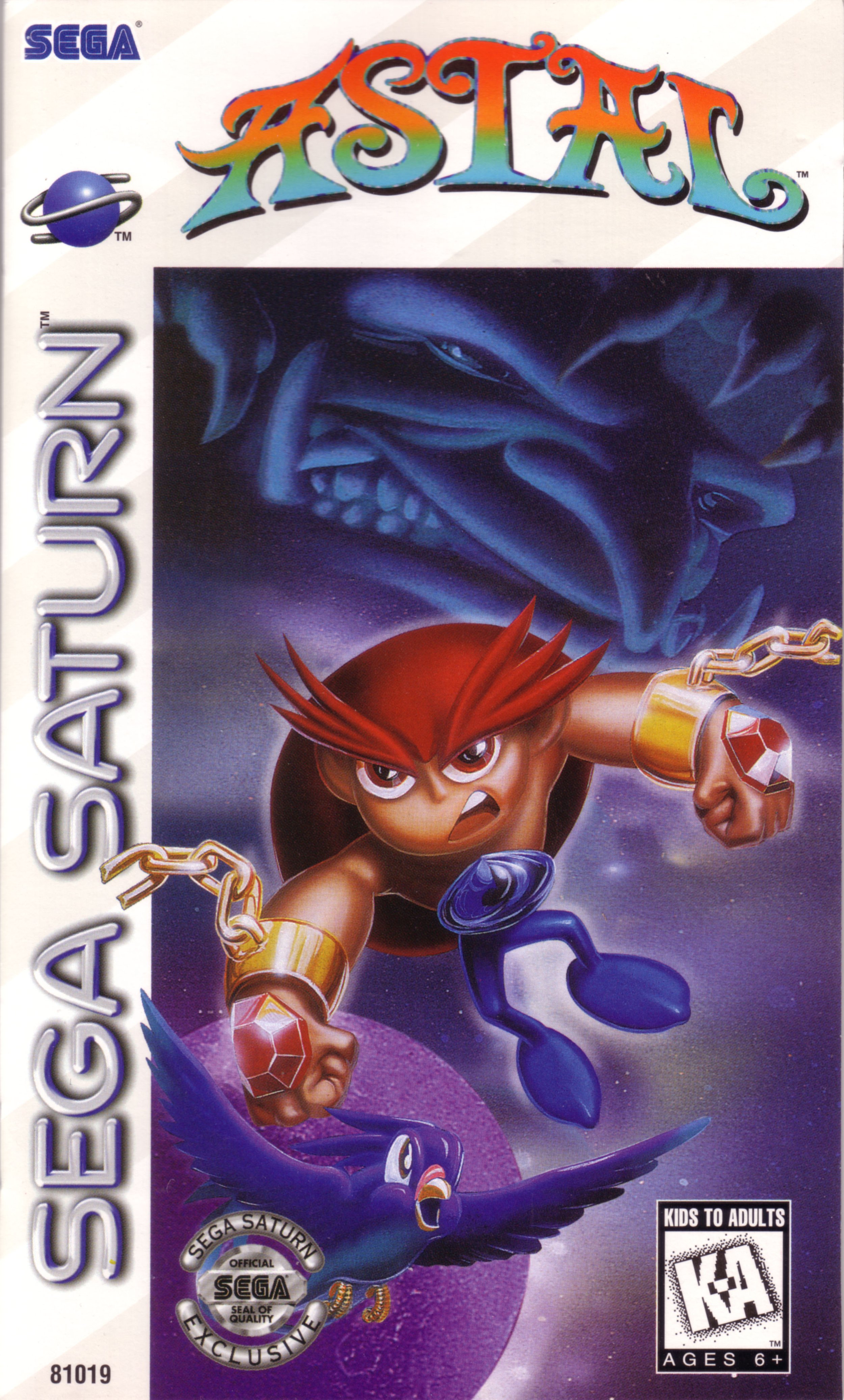
ASTAL
Astal, released in 1995 for the Sega Saturn, stands out as a visually stunning and artistically crafted platformer that showcased the console's capabilities. Developed by Sega's internal team, Astal was among the early titles for the Saturn, designed to demonstrate the system's prowess in handling detailed 2D graphics in an era increasingly dominated by 3D visuals.
The creation of Astal was driven by a desire to merge traditional platforming elements with a distinctive art style. The development team, led by creators who sought to push the boundaries of 2D gaming, drew inspiration from various sources, including fantasy literature and animation. Their goal was to create a game that not only played well but also conveyed a strong artistic vision, setting Astal apart from more conventional titles of the time.
Astal is noted for its moderate to challenging difficulty level, which stems from its intricate level designs and the need for precise timing and control. The game incorporated unique mechanics, such as Astal's ability to manipulate the environment to defeat enemies or solve puzzles, adding depth to the traditional platforming gameplay.
The graphics and visual design of Astal were its most lauded aspects. The game featured vibrant, hand-drawn backgrounds and sprites that brought its fantasy world to life with exceptional clarity and detail. The use of vivid colors and fluid animations created an immersive experience that was both a visual treat and a showcase of the Sega Saturn's capabilities in rendering high-quality 2D art.
The music and sound design of Astal further enriched the game's atmosphere. The soundtrack, composed with an orchestral quality, perfectly complemented the game's mystical and ethereal settings. Sound effects, from the character's actions to the environmental interactions, were carefully crafted to enhance the game's immersive feel.
In terms of design, Astal stood out for its emphasis on storytelling and character development, uncommon in platformers of that era. The game featured a simple yet engaging narrative that unfolded through in-game events and cutscenes, adding a layer of emotional depth to the gameplay.
Culturally, Astal did not have a widespread impact, largely due to the Sega Saturn's struggle to compete with rival consoles and a shift in market preferences towards 3D gaming. However, it has since been recognized as a cult classic, admired for its artistry and craftsmanship in game design.
Did you know? Astal was one of the few games of its time to use parallax scrolling and multi-layered backgrounds to create a sense of depth in a predominantly 2D game, a technique that added to its visual appeal and complexity.
Despite its limited commercial success, Astal remains a testament to the artistic potential of video games. It exemplifies how games can serve as a canvas for creative expression, blending gameplay with visual and narrative art to create a compelling and memorable experience.

